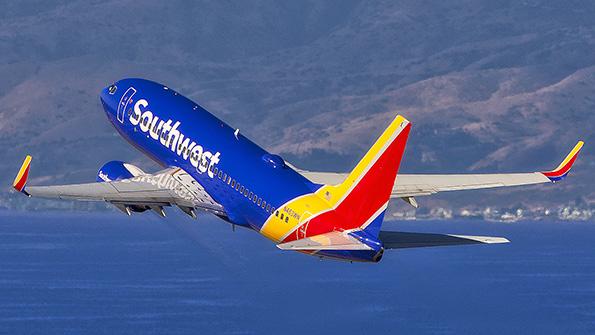Commentary: Southwest COO Promises Investment And Fixes

For many travelers who set out to make holiday memories in the final weeks of 2022, anticipated moments with family and friends were significantly delayed or dashed altogether by an epic winter storm that halted airline travel across the U.S.
Forecast-busting bitterness and unrelenting waves of cold, ice and snow combined in intensity, and with an unprecedented reach that gripped all airlines. Days of disruption from a weather event that affected all carriers became a crew event unique to Southwest Airlines, and it’s been well-documented that we let down our customers and our people who heroically tried to serve them.

It’s taken several weeks to sort through the complexity of contributing factors, and that work to understand lessons learned and root causes continues. Bottom line: We know we simply weren’t sufficiently ready for the unique conditions of this extreme storm. And, as we’ve stated countless times, we messed up and are very sorry for how the disruption meaningfully disappointed so many.
The culminating factors of the storm diminished the resiliency of our winter weather preparedness, and it effectively halted our operations at Denver and Chicago—two airports where 25% of our flight crews are based. Those shutdowns stopped the flow of fresh flight attendants and pilots who were expected to operate assigned flights two and three days down the line, and that created a record-high number of problems that came at us in a tsunami that required individualized solutions. It completely overwhelmed our processes for rescheduling and assigning crews.
Our technology never failed during this event, but the workflow we had set up around it couldn’t adequately overcome the size of the problem.
To mitigate the risk of any repeats we’re investing in capabilities across the airline. This will address everything from ground equipment to the amount of de-icing we can accomplish in the harshest conditions, to how we communicate and align across multiple operational workgroups during disruptions, to strengthening our interconnected systems so they remain functioning in extreme circumstances where historic levels of problems are thrown at them.
We’re reprioritizing and increasing investment in technology and have $1.3 billion budgeted for technology projects in 2023, which is about 25% higher than what we spent in 2019. We’re prioritizing enhancements to our crew scheduling software, and we’ve strengthened our early indicator dashboard to escalate operational issues earlier. We’ve identified and trained teams that can quickly mobilize to bring additional people power to support crew recovery efforts. We’ve also made organizational changes to improve communication and coordination among key divisions of the airline so that we can much more quickly access data to keep our overall system moving.
The images and stories from that week are powerful, but so is the response of our people in the wake of this disruption: Thousands of delayed bags have since been delivered, and we’ve issued hundreds of thousands of refunds and reimbursed unplanned travel expenses. We’re working to repair our reputation one conversation at a time.
What we hope our customers and people feel is confidence in our approach to eliminate risk of a repeat event; what we hope they know is that Southwest is a company with more than five decades of successes built around relationships—with our customers and the communities we serve.
-Andrew Watterson is COO at Southwest Airlines.




